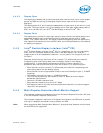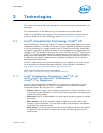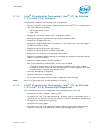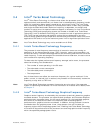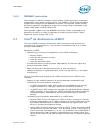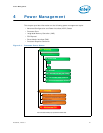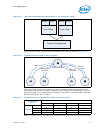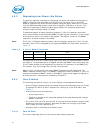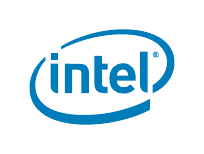
Datasheet, Volume 1 45
Technologies
3.6.3 RDRAND Instruction
The processor introduces a software visible random number generation mechanism
supported by a high quality entropy source. This capability will be made available to
programmers through the new RDRAND instruction. The resultant random number
generation capability is designed to comply with existing industry standards in this
regard (ANSI X9.82 and NIST SP 800-90).
Some possible usages of the new RDRAND instruction include cryptographic key
generation as used in a variety of applications including communication, digital
signatures, secure storage, and so on.
3.7 Intel
®
64 Architecture x2APIC
The Intel x2APIC architecture extends the xAPIC architecture that provides key
mechanism for interrupt delivery. This extension is intended primarily to increase
processor addressability.
Specifically, x2APIC:
• Retains all key elements of compatibility to the xAPIC architecture:
— delivery modes
— interrupt and processor priorities
— interrupt sources
— interrupt destination types
• Provides extensions to scale processor addressability for both the logical and
physical destination modes
• Adds new features to enhance performance of interrupt delivery
• Reduces complexity of logical destination mode interrupt delivery on link based
architectures
The key enhancements provided by the x2APIC architecture over xAPIC are the
following:
• Support for two modes of operation to provide backward compatibility and
extensibility for future platform innovations:
— In xAPIC compatibility mode, APIC registers are accessed through memory
mapped interface to a 4
KB page, identical to the xAPIC architecture.
— In x2APIC mode, APIC registers are accessed through Model Specific Register
(MSR) interfaces. In this mode, the x2APIC architecture provides significantly
increased processor addressability and some enhancements on interrupt
delivery.
• Increased range of processor addressability in x2APIC mode:
— Physical xAPIC ID field increases from 8 bits to 32 bits, allowing for interrupt
processor addressability up to 4
GB-1 processors in physical destination mode.
A processor implementation of x2APIC architecture can support fewer than
32
bits in a software transparent fashion.
— Logical xAPIC ID field increases from 8 bits to 32 bits. The 32-bit logical x2APIC
ID is partitioned into two sub-fields – a 16-bit cluster ID and a 16-bit logical ID
within the cluster. Consequently, ((2^20) -16) processors can be addressed in
logical destination mode. Processor implementations can support fewer than
16
bits in the cluster ID sub-field and logical ID sub-field in a software agnostic
fashion.



